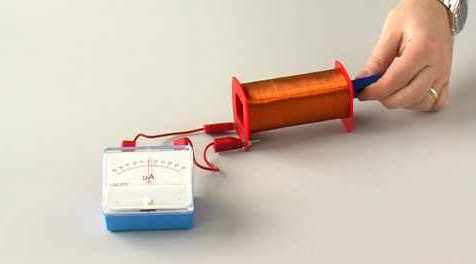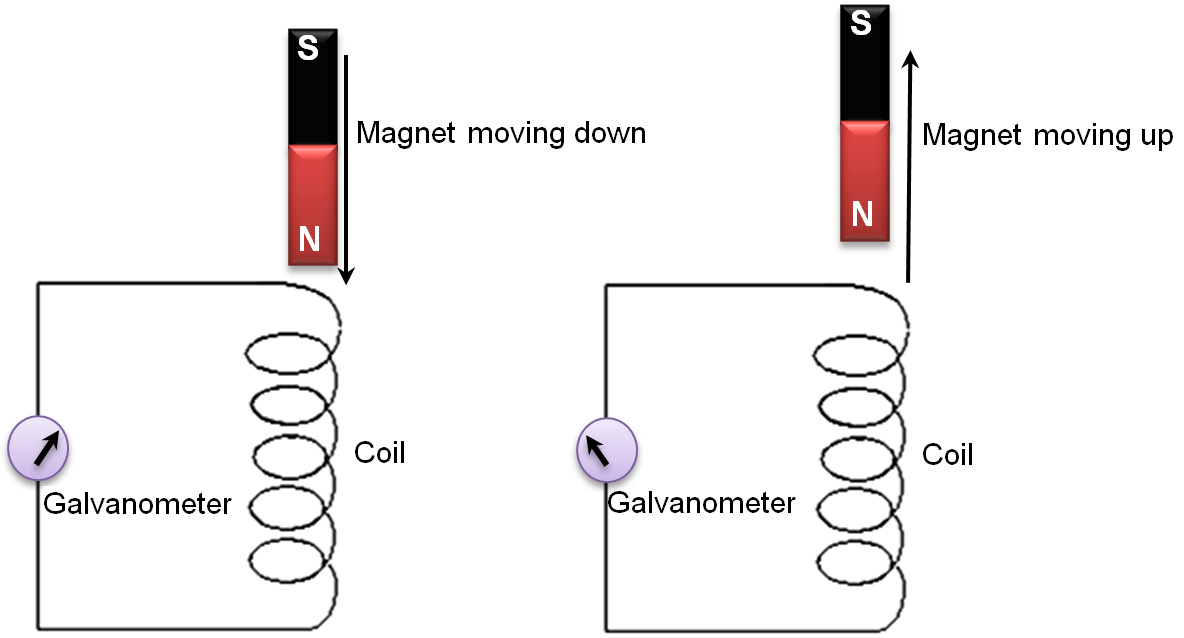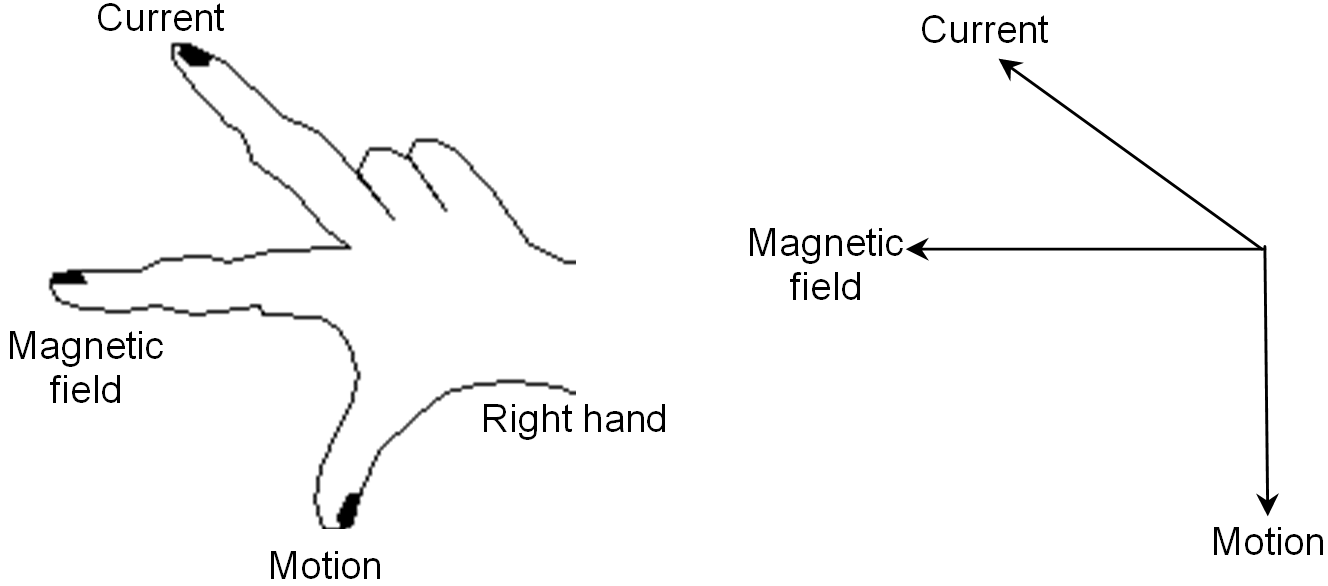The phenomenon of electromagnetic induction was discovered by Michael Faraday in 1831. He discovered that moving a wire in a magnetic field generates an electric current in the wire. This phenomenon is known as electromagnetic induction and the current so produced is called induced current. Thus, electromagnetic induction may be defined as the phenomenon of moving a wire in a magnetic field to produce electric current.

Experiment to Demonstrate Electromagnetic Induction
Take a long coil of insulated copper wire having a number of turns. Connect it to a sensitive galvanometer as shown in Fig. 14. Hold a bar magnet above the coil in such a manner that its north pole points towards the coil.
Push the north pole of the magnet in the coil in such a manner that magnet does not touch the walls of the coil. Now, you will observe that the galvanometer has suddenly deflected to the right side. This deflection indicates the production of current in the coil. Now, pull the north pole of the magnet out of the coil. In this case, you will observe that the galvanometer has deflected to the left side.
This shows that moving a wire in a magnetic field produces electric current in the wire. Similar results can be obtained if the magnet is kept stationary and the coil is moved.

Determination of Direction of Induced Current
The direction of induced current produced in a wire moving in a magnetic filed can be determined by using Fleming’s right hand rule.
Fleming’s Right Hand Rule
According to this rule: stretch the thumb, forefinger and central fingers of your left hand mutually perpendicular to each other so that the thumb points in the direction of motion and forefinger in the direction of magnetic field then the direction in which the central finger points gives the direction of induced current produced in the conductor.

Test Your Understanding and Answer These Questions:
- Define electromagnetic induction.
- What is Fleming’s right hand rule?
- Which rule is used to determine the direction of induced current?
- Name the scientist who discovered the phenomenon of electromagnetic induction.
- Give an experiment of demonstrate electromagnetic induction.
- A coil of copper wire is connected to a galvanometer. What would happen if a bar magnet is (a) pushed into the coil with its north pole entering first? (b) pulled out of the of the coil? (c) held stationary inside the coil?
